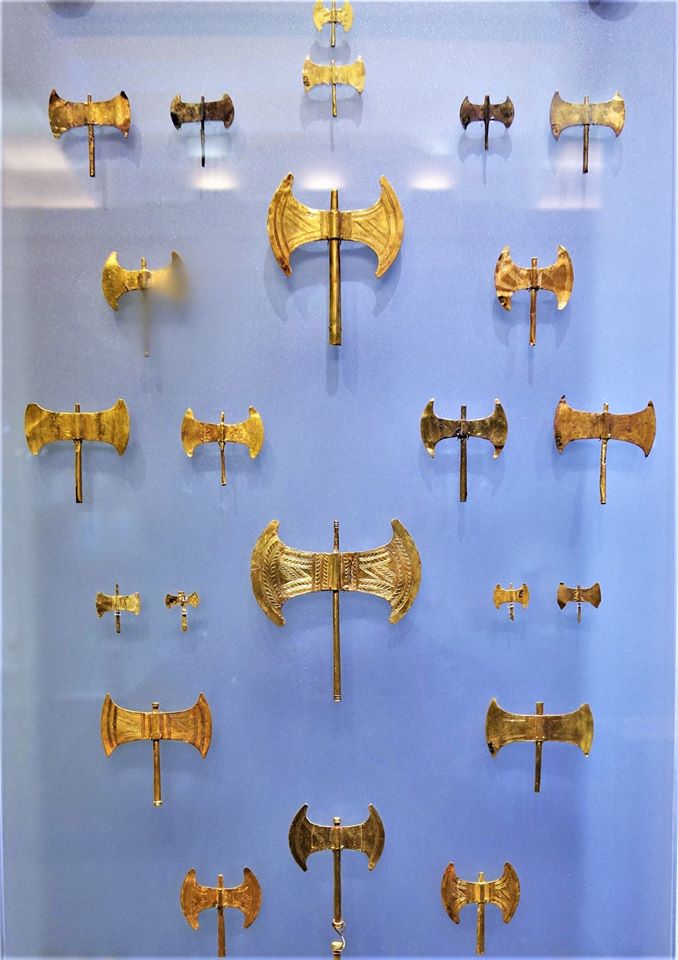Minoan votive double axes 1700-1450 BCE
"Although some large bronze examples of the {double axe}, the most common of all Minoan religious symbols, were clearly used as tools, miniature specimens in unsuitable and sometimes precious materials (e.g. gold, silver, lead, steatite, terracotta), as well as very fragile bronze examples (e.g. the gigantic specimens from Nirou Khani), must have had a purely symbolic function. The earliest examples date from the middle of the EM period. Double axes often appear in representational scenes, usually set in the top of stone bases or between “horns of consecration”. Their precise significance is disputed. In the Near East, axes of this sort are often wielded by male divinities and appear to be symbols of the thunderbolt. Since in Crete the double axe is never held by a male divinity, an alternative view which ascribes its frequency in art to its popularity as a sacrificial instrument has considerable appeal. Miniature examples may have functioned as charms or amulets. Plutarch (Quaestiones Graecae 302A), a Greek author of the second century A.D., reports that the Carian (a southwest Anatolian population) word for double axe was labrys, a word likely to be connected with the mythological name for Minos’ palace and the Minotaur’s lair at Knossos, labyrinthos (= “place of the double axe”?)."
-taken from dartmouth.edu link below
 |
| Votive double axes of gold. The largest axe measures about 10 - 12 cm. Crete, Arkalochori cave. MM III A - LM I B 1700 - 1450 BC Crete, Iraklion, AMI. |
Source:
https://www.facebook.com/MinoanMycenaeTroy/photos/a.513788435387495/1310436765722654/?type=3&theater
Quote:
http://www.dartmouth.edu/~prehistory/aegean/?page_id=720
http://www.perseus.tufts.edu/hopper/text?doc=Perseus%3Atext%3A2008.01.0215%3Asection%3D45


Comments
Post a Comment